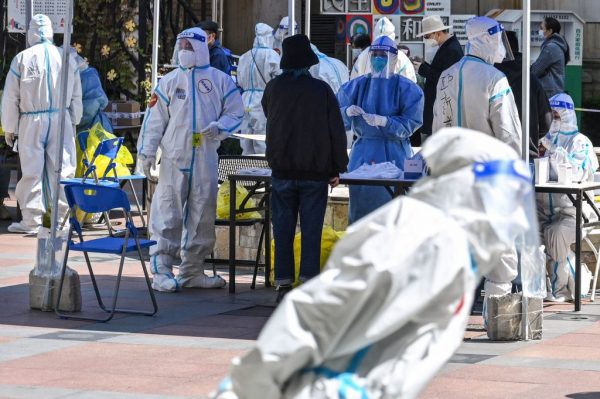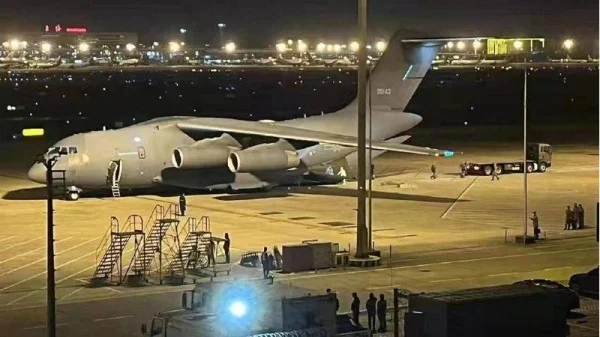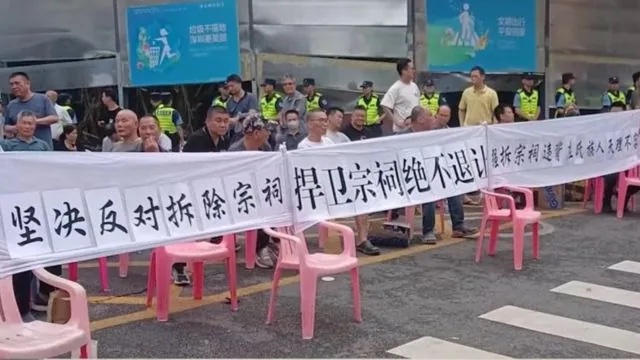Shanghai has been experiencing its worst outbreak of COVID-19 since the start of the pandemic. In a desperate bid to quell further spread of the virus and continue adhering to its stringent “Zero-COVID” strategy, the Chinese Communist Party (CCP) announced the deployment of thousands of soldiers to Shanghai.
Military jets were seen touching down in Shanghai’s airport on Sunday evening (April 3), bringing with them over 2,000 soldiers to assist in the mandatory screening of the city’s 26 million residents.
The plan, which will see every resident undergo nucleic acid testing starting Monday morning (April 4), comes as Shanghai reported a record high of more than 9,000 positive cases in a single day.
State media mouthpiece Liberation Army Daily reported on April 3 that Beijing had drafted military personnel from 7 medical units affiliated to the Army, Navy, and a Joint Logistics Support Force in order to support the Shanghai authorities.

MORE ON CHINA’S CORONAVIRUS SITUATION:
- China Deploys Special COVID Task Force to Shanghai as Cases Skyrocket
- Shanghai Begins Second Stage of Citywide Lockdown, Panicked Residents Empty Supermarkets
- ‘Zero-COVID’ Lockdown in Shanghai Compounds Xi’s Political Dilemma
Over 30,000 medical professionals sent to Shanghai
In addition to the troops, over 30,000 medics have also been sent to Shanghai, according to the Shanghai Municipal Health Commission. The notice said that medical workers from Jiangsu, Zhejiang, Anhui, Shandong, Jiangxi, Tianjin, Hainan, and other cities across the country were scheduled to arrive on April 4.
According to China’s Health Commission’s report released on April 4, the number of new cases in Shanghai far exceeds that of Wuhan – where the pandemic first began over two years ago. Official data revealed that 9,006 new infections were reported on April 3, with the number of new infections seemingly multiplying everyday.
Success
You are now signed up for our newsletter
Success
Check your email to complete sign up
Although the pandemic has claimed millions of lives worldwide and caused catastrophic economic losses in the global community, Chinese authorities have claimed slightly over 288,000 infections and less than 5,000 deaths nationwide.
Despite this claim, there has been considerable doubt cast as to the veracity of these figures, with the real number of infections speculated to be much higher.
Though the case numbers are small by international standards, the fast-spreading outbreak has placed Shanghai on the front lines of China’s uncompromising battle with the virus.
As the government doubles down on testing, mandatory citywide lockdowns and controversial isolation policies, the policies have resulted in violence and tragedy as young children are forcefully separated from their parents, and reports of people dying from medical conditions due to hospital staff refusing to admit them have been widely reported.
Somber reminders
After news broke that the army would be deployed, many people drew comparisons between Shanghai’s worsening situation and the early days of the pandemic in Wuhan – when the army was also sent in.
One netizen wrote on Weibo, “[Shanghai’s situation] reminds me of Wuhan in 2020. The army was sent there on the first day of Chinese New Year.”
“Are so many people [from other places] not afraid of being infected?” another user questioned, referencing the thousands of medical workers and troops arriving in Shanghai this week.
Authorities announced on March 27 that Shanghai’s citywide lockdown would be conducted in two phases. The city’s Pudong financial district and nearby areas were scheduled to be locked down from March 28 to April 1 in order to allow health workers to conduct two rounds of mass testing.
In the second phase of the lockdown, the vast downtown area west of the Huangpu River that divides the city began its own five-day lockdown lasting from April 1 to the 5th. However, on April 4, residents were notified that the lockdowns would be extended as positive cases continue to rise.














